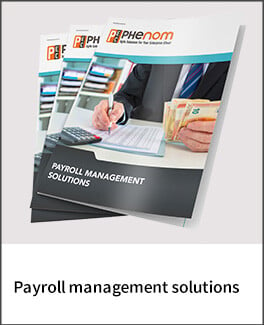One of the advantages of being a seasoned professional is that we have the memory of how we worked before we had cloud technology. It helps us appreciate what modern technology has done for us. Most millennials cannot conceive manual time sheets, payday trips to the bank, and having an army of people to audit payroll.
ERP Payroll systems of the 1990s streamlined timekeeping and payroll processes, but much of the tedium remained. Software built on relationship databases was clunky and hard to use. We still had a lot of manual data entry, long processing times, and endless poring over page after page of reports to find and correct errors.
Long after talent management moved to the cloud, Finance, Payroll, and IT guarded their legacy platforms. Until recently the suggestion to move payroll to the cloud met with resistance. Most of the pushback came from security concerns and the fear of losing control.

Workday® changed that perception when they launched Finance and HR in the Cloud in 2006 using fast in-memory processing and an object model approach to programming. The object-oriented concept was not new but applying it to core financial operations was a bold move.
Now that cloud technology has matured enough to prove its security and stability, cloud payroll implementations are growing. Workday® Payroll has 757 customers, of which 510 are live on the platform.[1] Also, Workday® has the integrations and software to manage any third-party payroll worldwide.
Payroll management services in the Cloud gives us solid advantages over legacy platforms.
- Lower, more predictable cost. Maintenance and upgrades are included in the subscription.
- Scalability. Workday® Finance handles organizational changes with ease.
- A consumer-grade interface in plain business language instead of cryptic database terms.
- Frequent updates. Instead of selling expensive version upgrades, Cloud vendors update their software regularly, and competition in the market drives constant innovation.
- Automatic regulatory updates. Legacy systems required IT to apply patches to update regulatory changes. Cloud vendors can push them out to all customers. You can have peace of mind knowing you are always in compliance.
Robust dashboards. You can run the processes, view and analyze the results, and make adjustments and corrections before you commit them.
While these improvements make payroll operation and maintenance much easier, implementation still requires the same diligence as legacy platforms. Your implementation partner will lead you through the standardized Workday® implementation steps, but there are actions you need to take in your organization to make sure a successful launch.
- Work out pain points in payroll processes and ancillary systems before you begin. If you have problems in a time and attendance application, a new payroll system will not resolve them. Map your related processes, including any integration or software that interacts with payroll. Include connections with external vendors, such as benefits and shared-cost perks.
- If you do not have a governance team and policy in place, get started now. Seize this opportunity to get control of your data. You don’t need to do it all now, but Finance is the right place to start.
- The intuitive interface and ease of use can lull you into a perception that the underlying configuration is correct. Don’t skimp on testing.
- Clean up problems before you implement. Don’t wait until after launch to correct outstanding issues.
- Plan to run several parallel payrolls before you turn off your old platform.
We hope these tips help you in having a trouble-free Workday® Payroll launch. If you think of any other points we should discuss, please use the comments section below to share your ideas.
References:
1. Verified by Workday® Sales Team, October 19, 2016.
 PhenomᵉCloud is a comprehensive technology solutions provider committed to empowering businesses to overcome challenges, enhance their workforce capabilities, and achieve superior outcomes.
PhenomᵉCloud is a comprehensive technology solutions provider committed to empowering businesses to overcome challenges, enhance their workforce capabilities, and achieve superior outcomes.

Leave a Comment